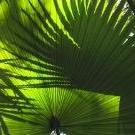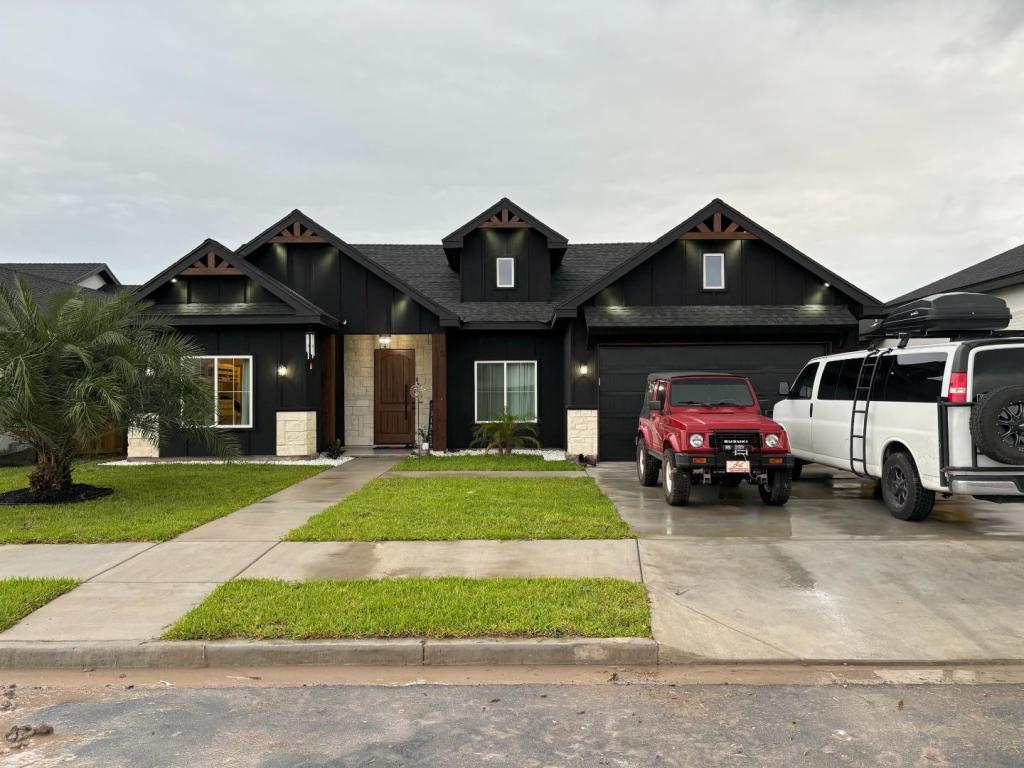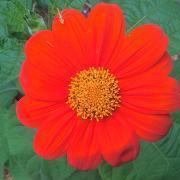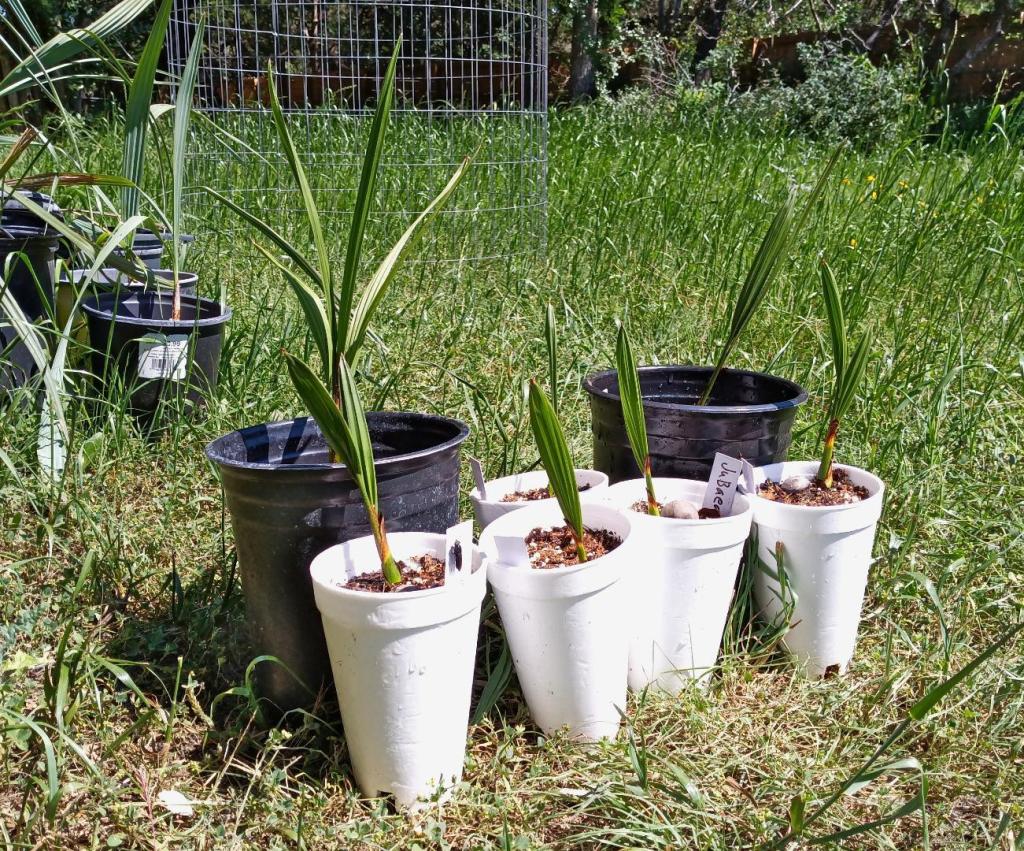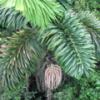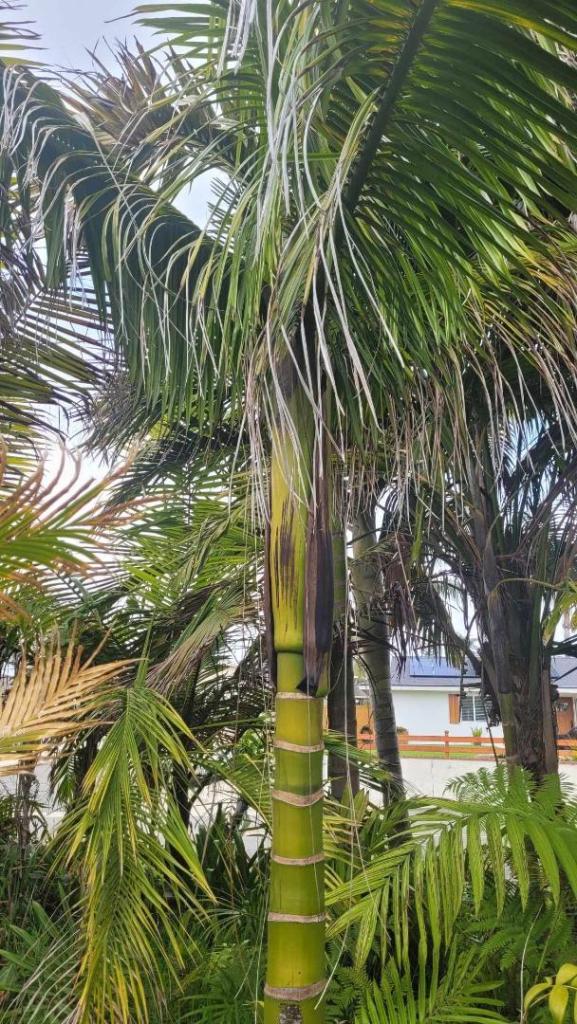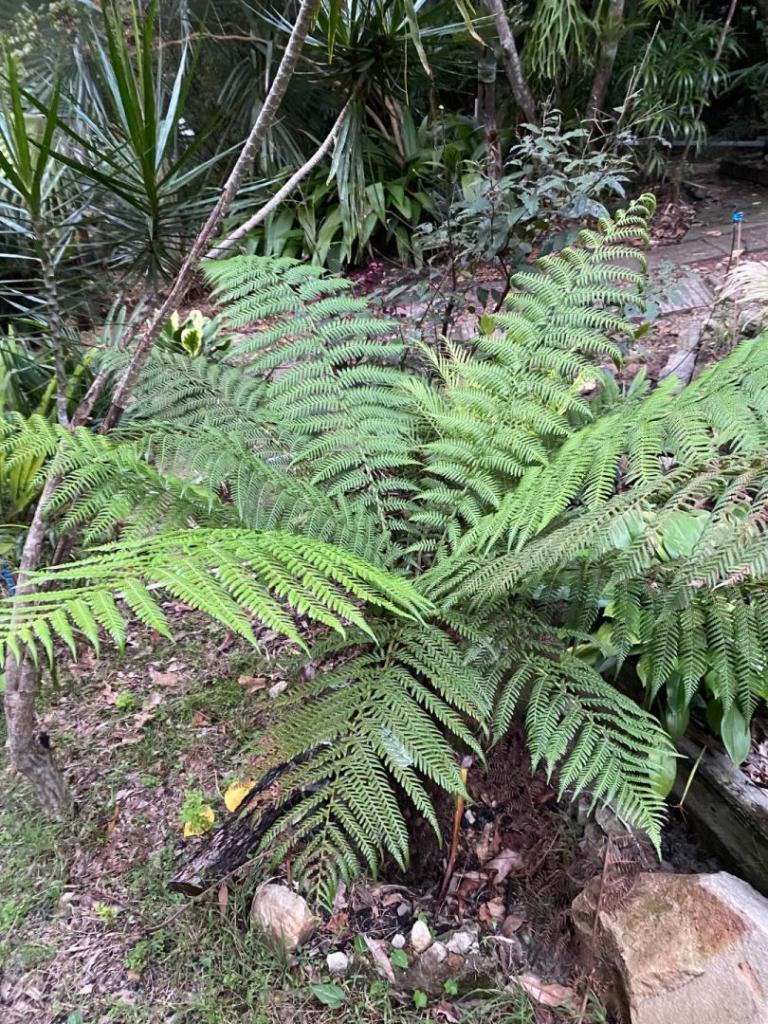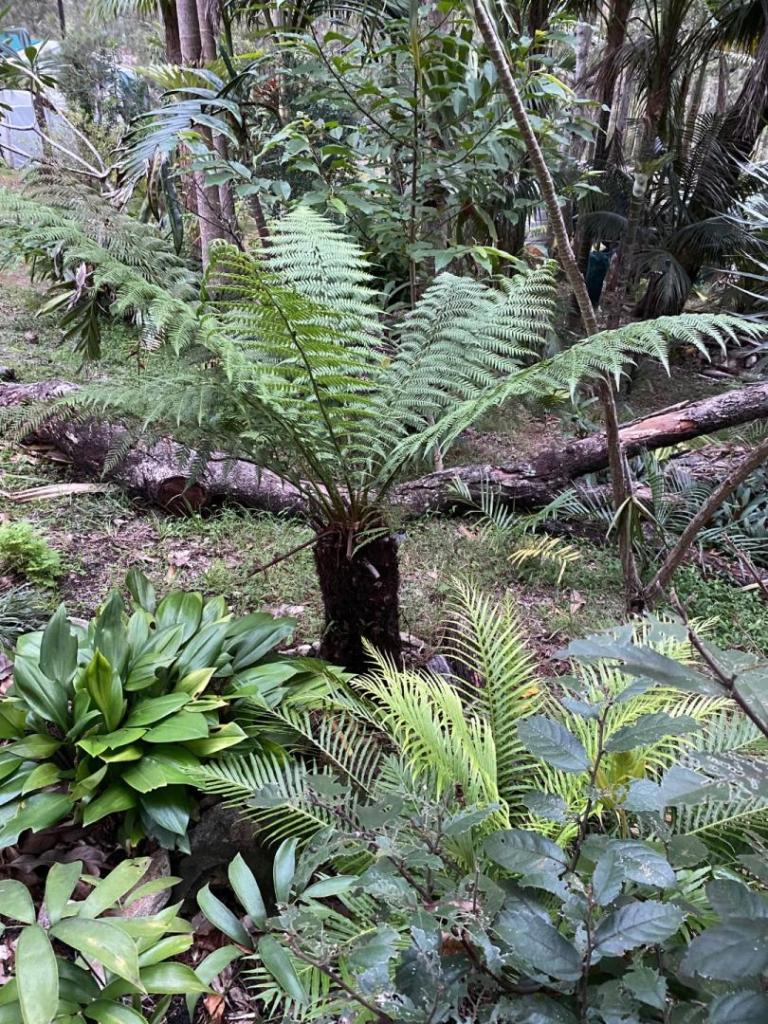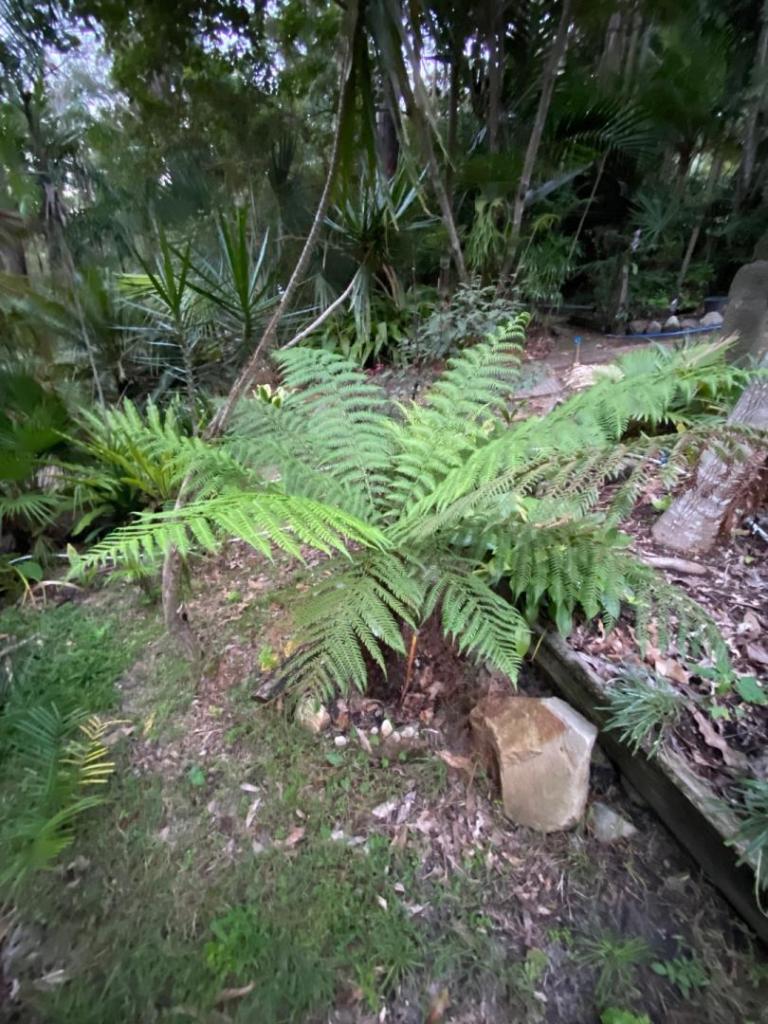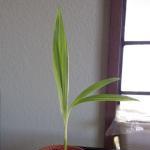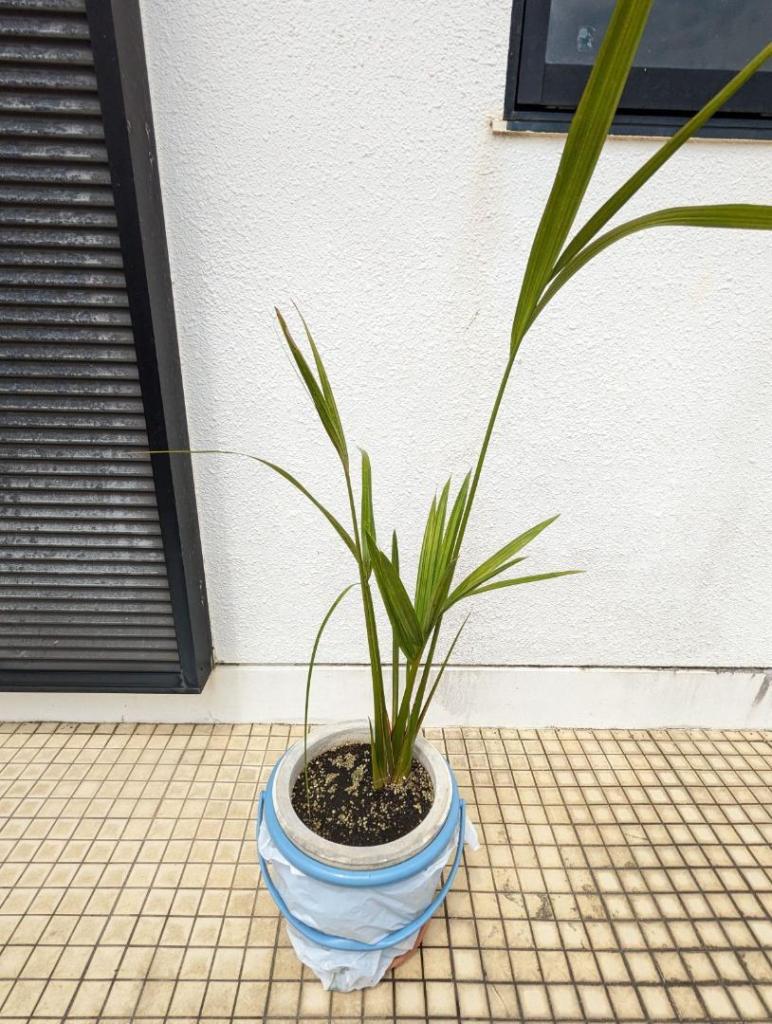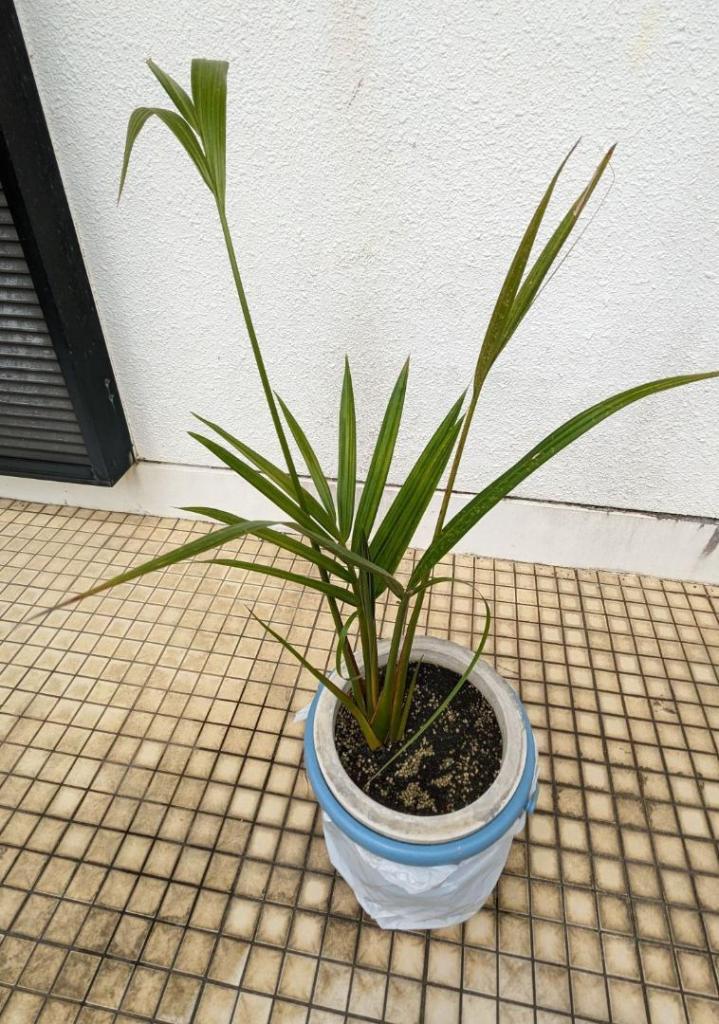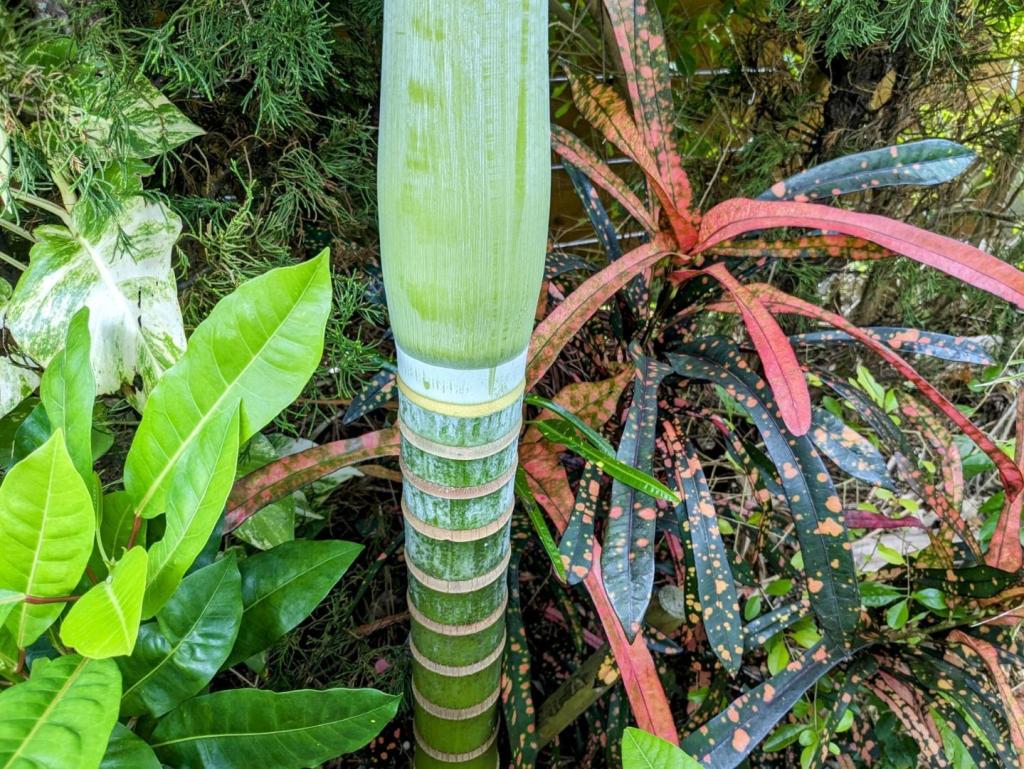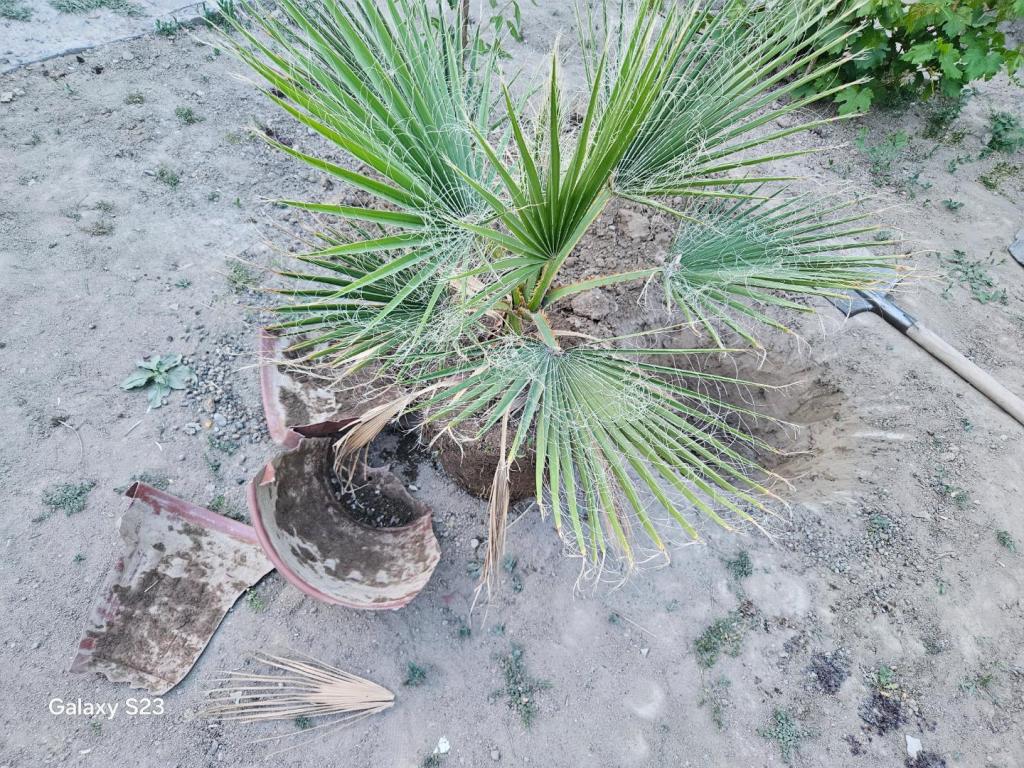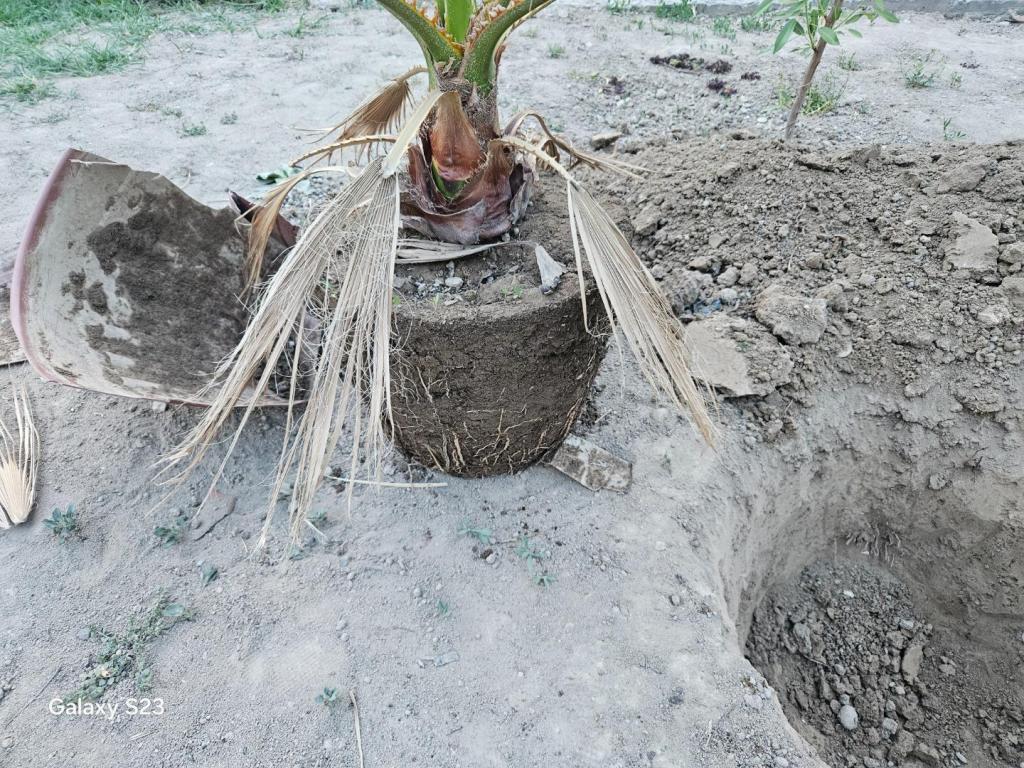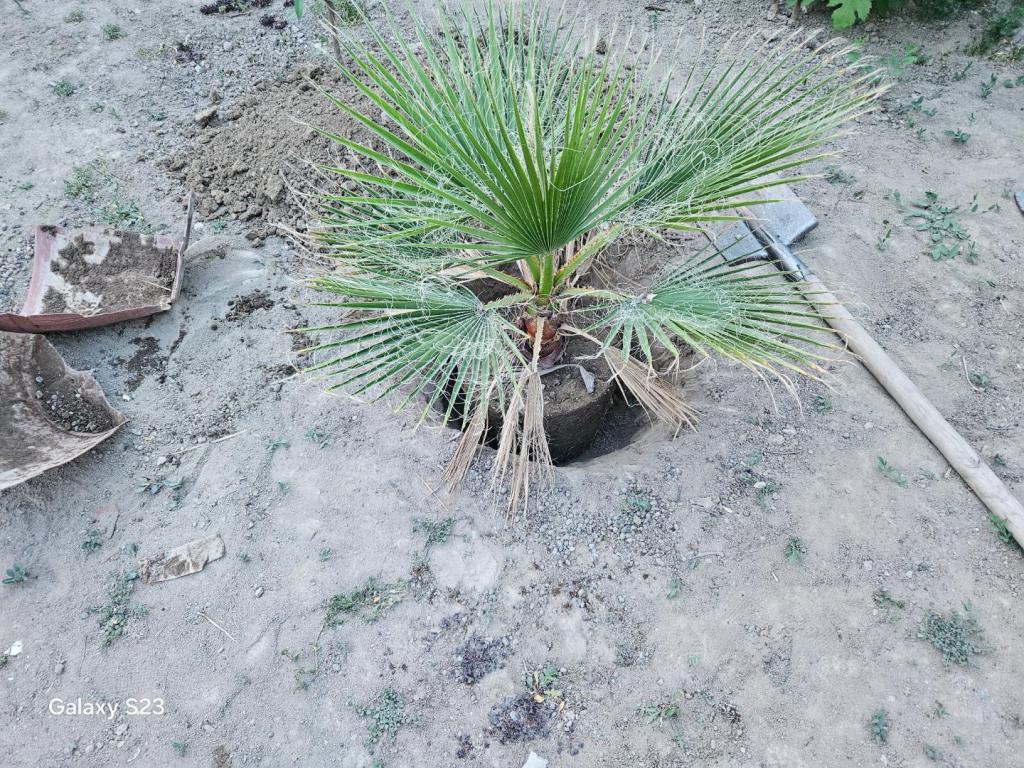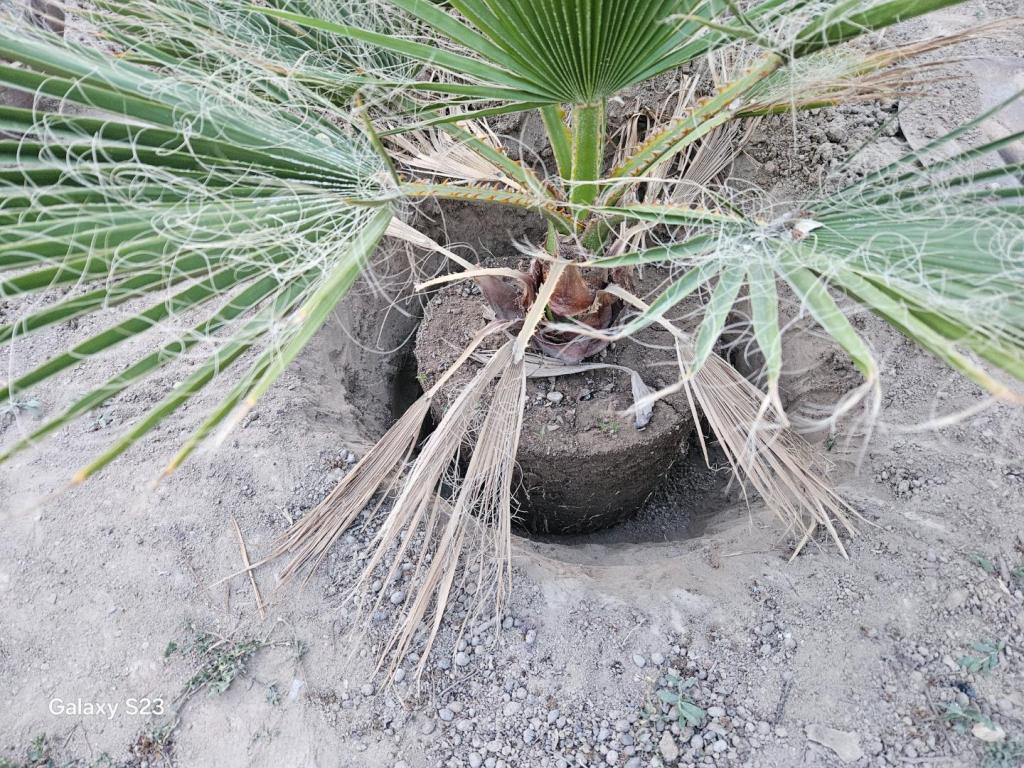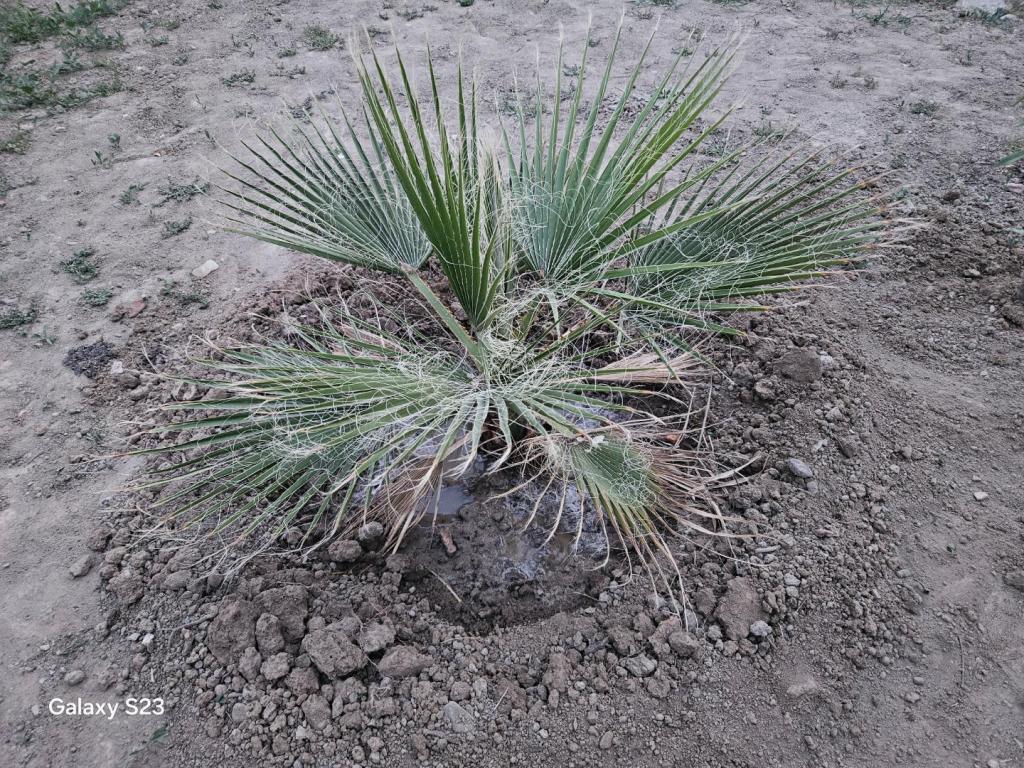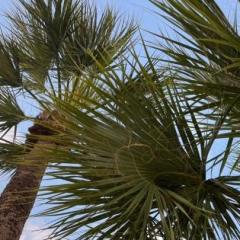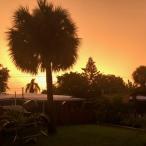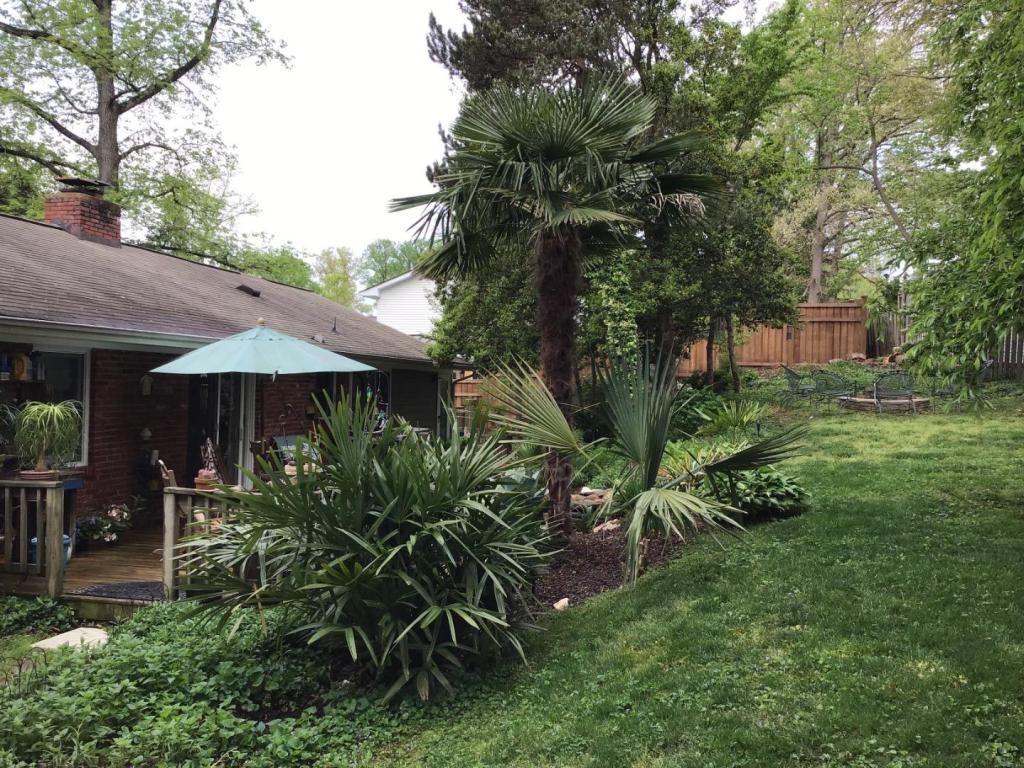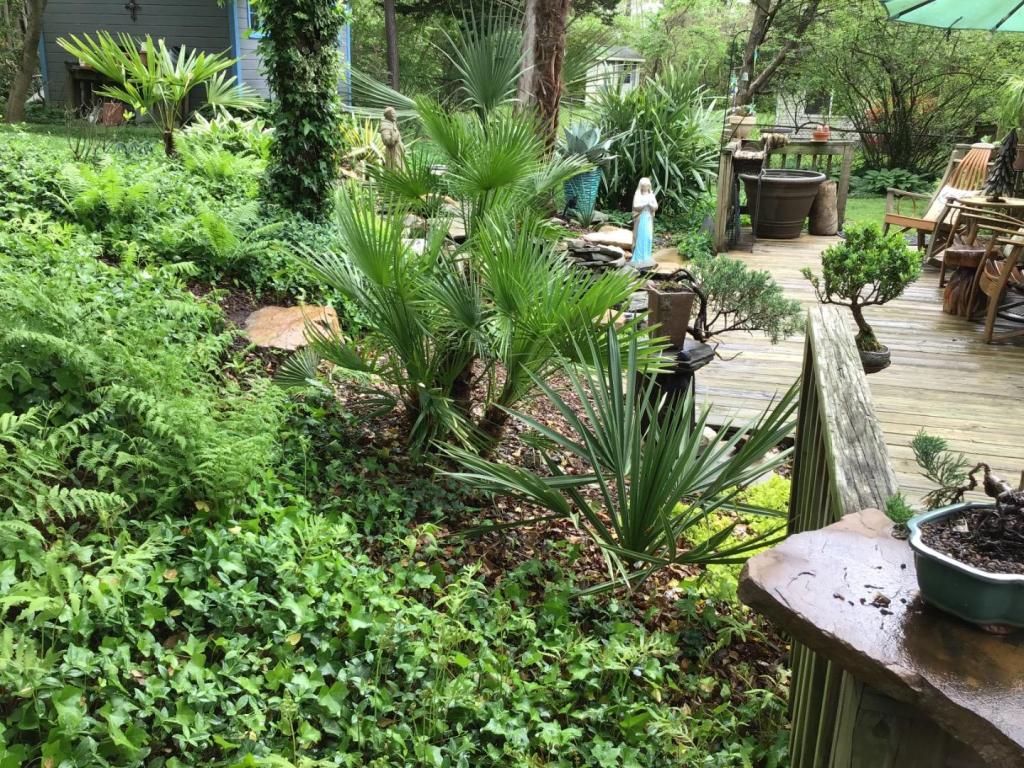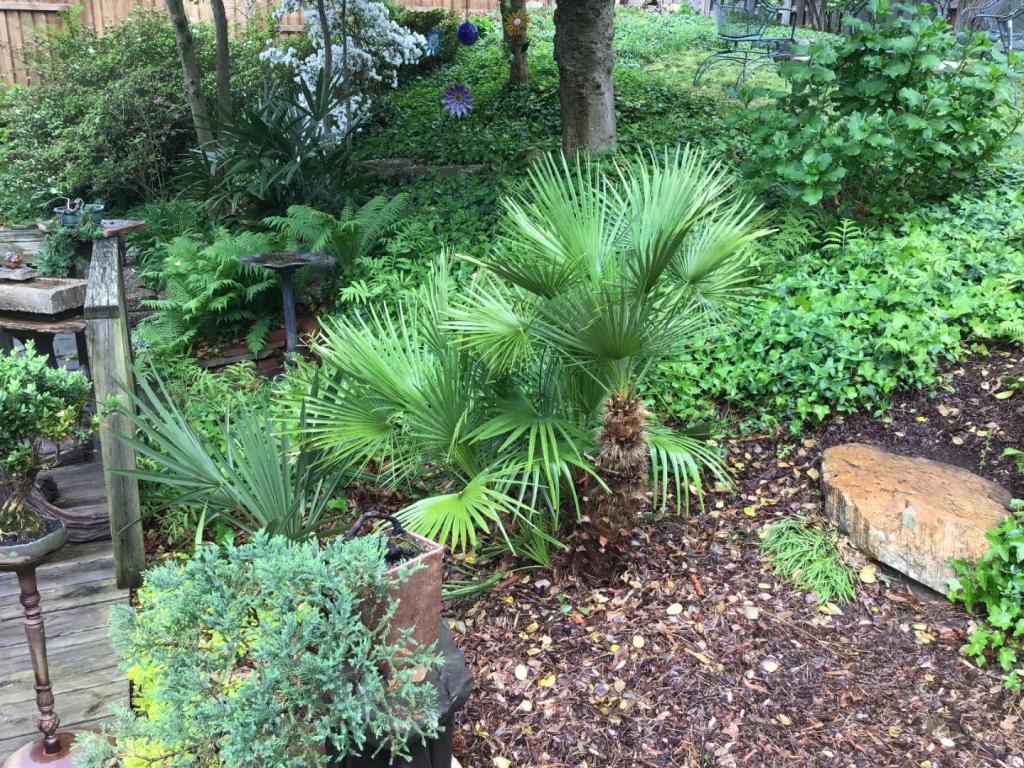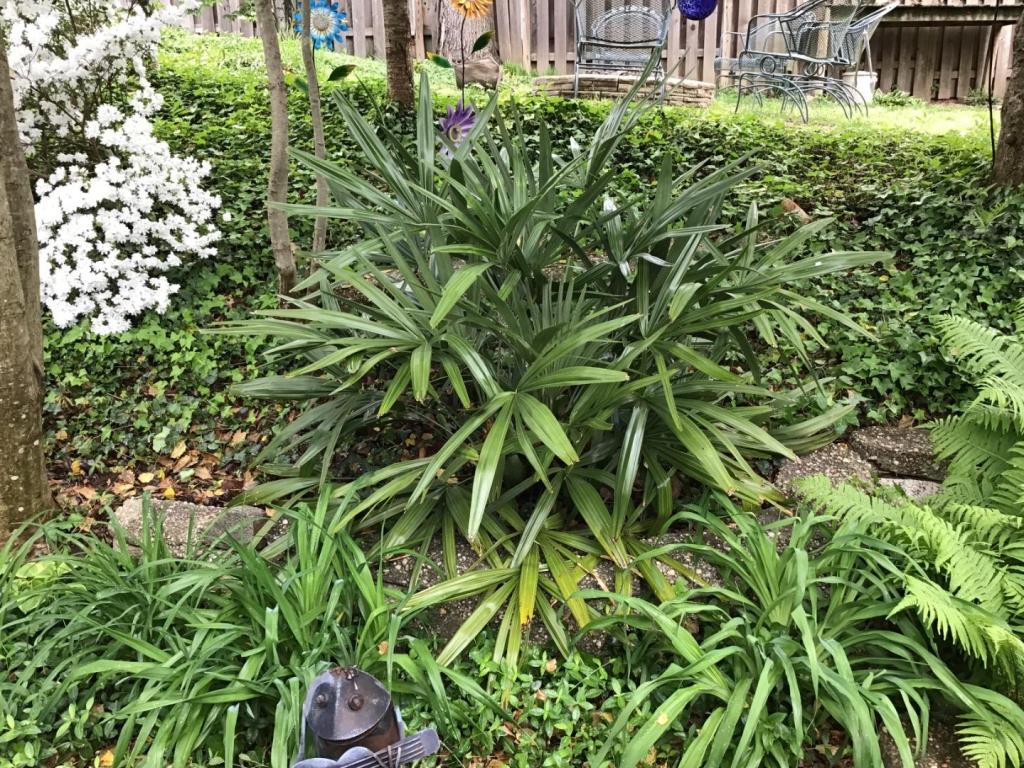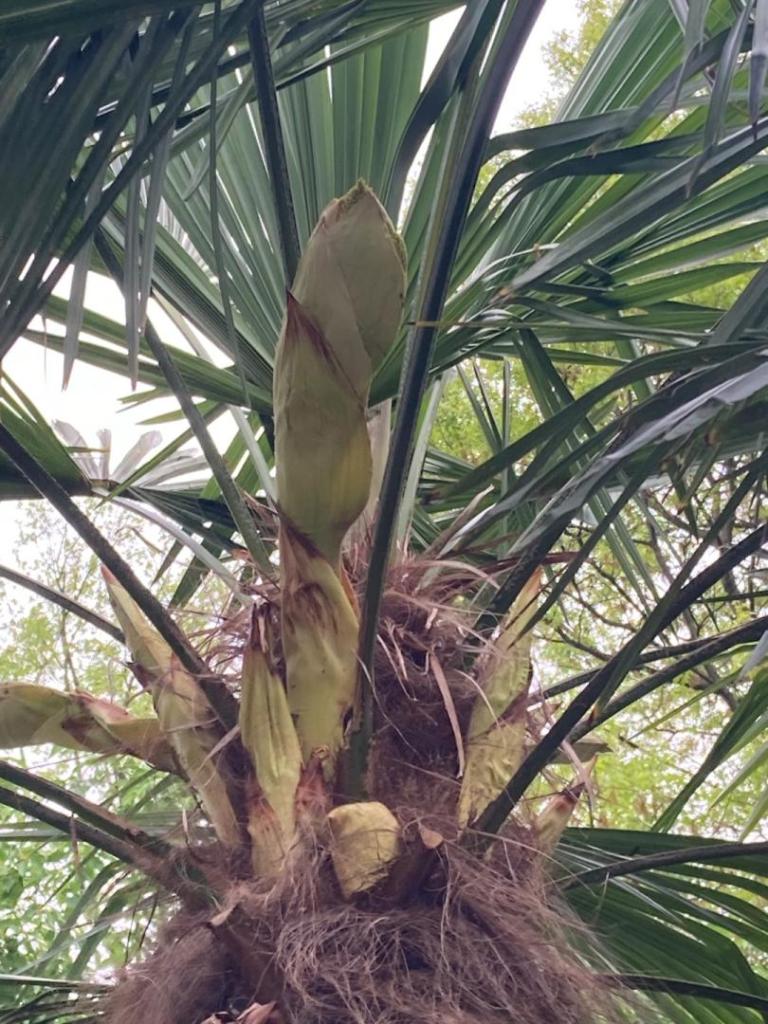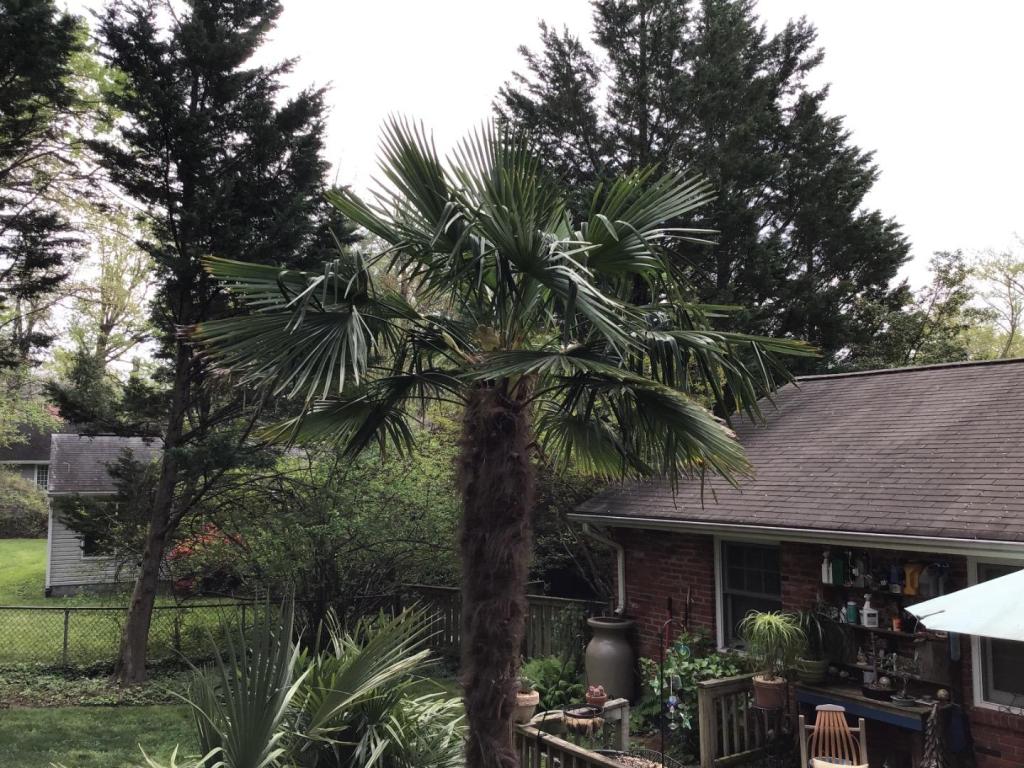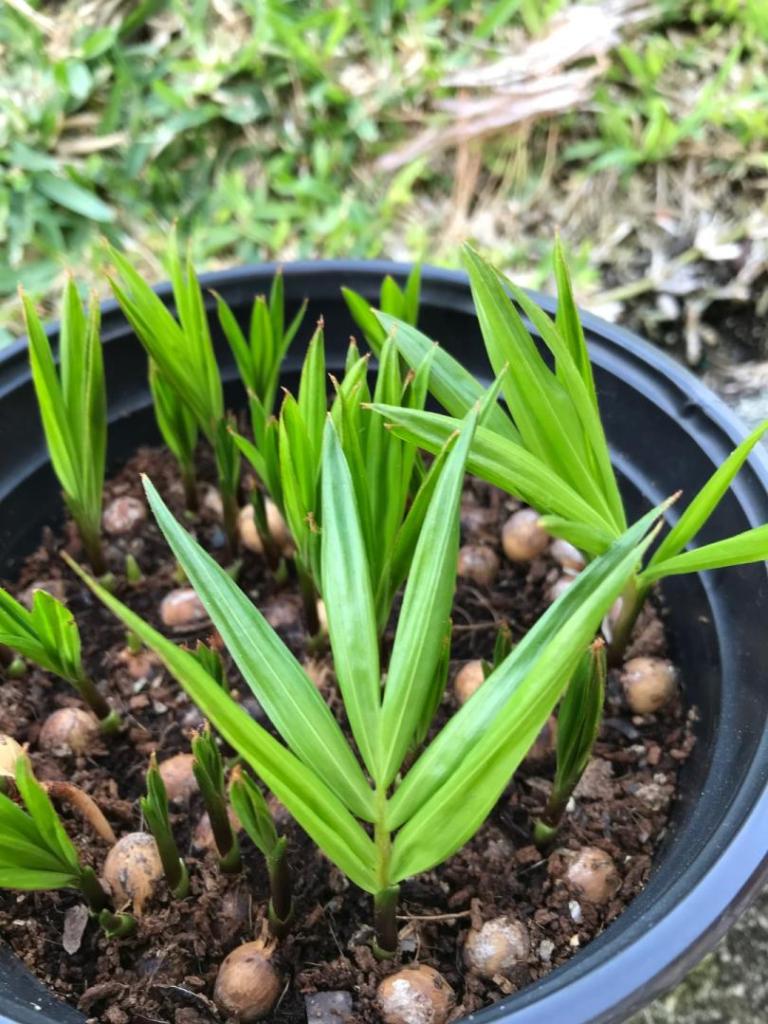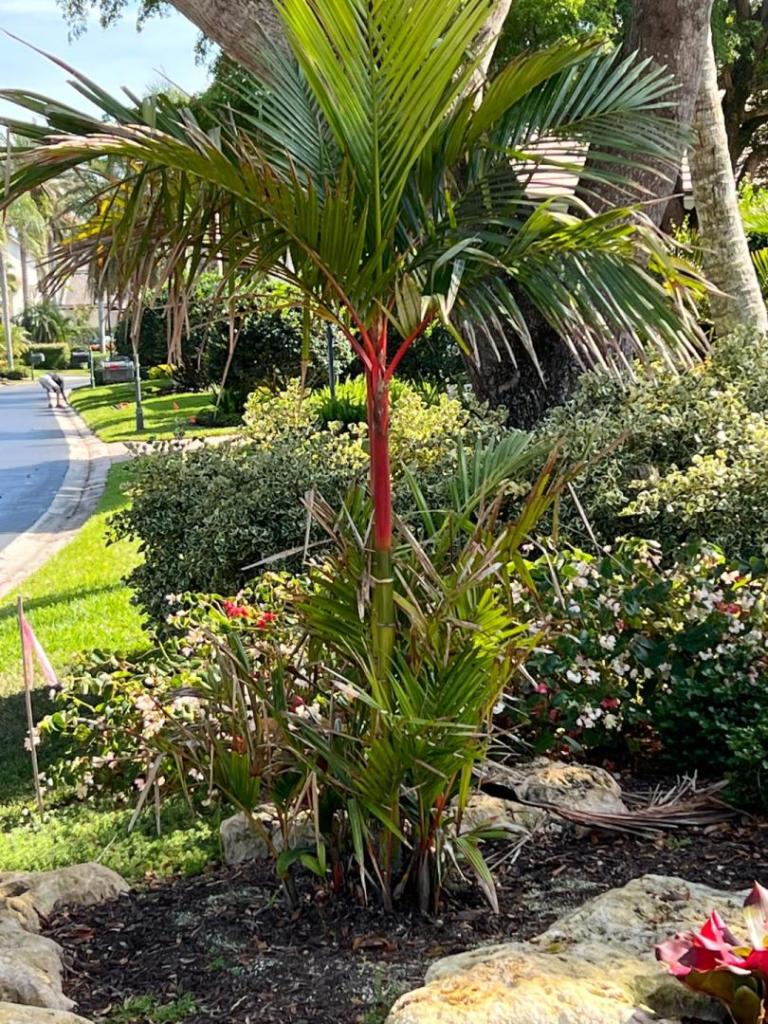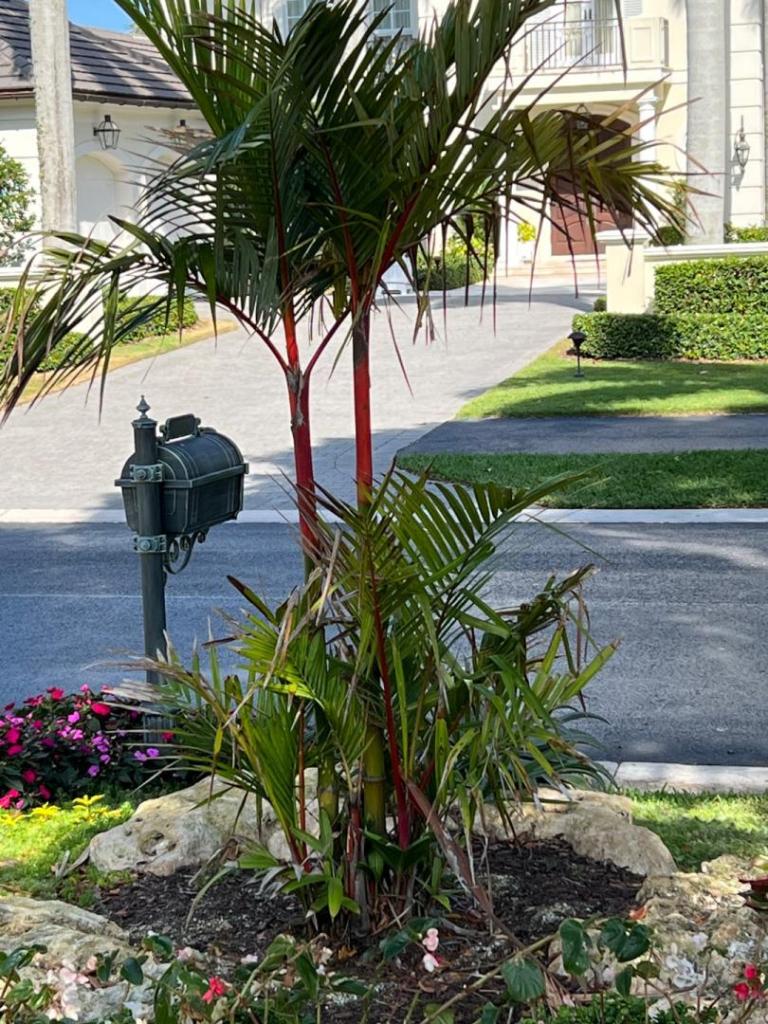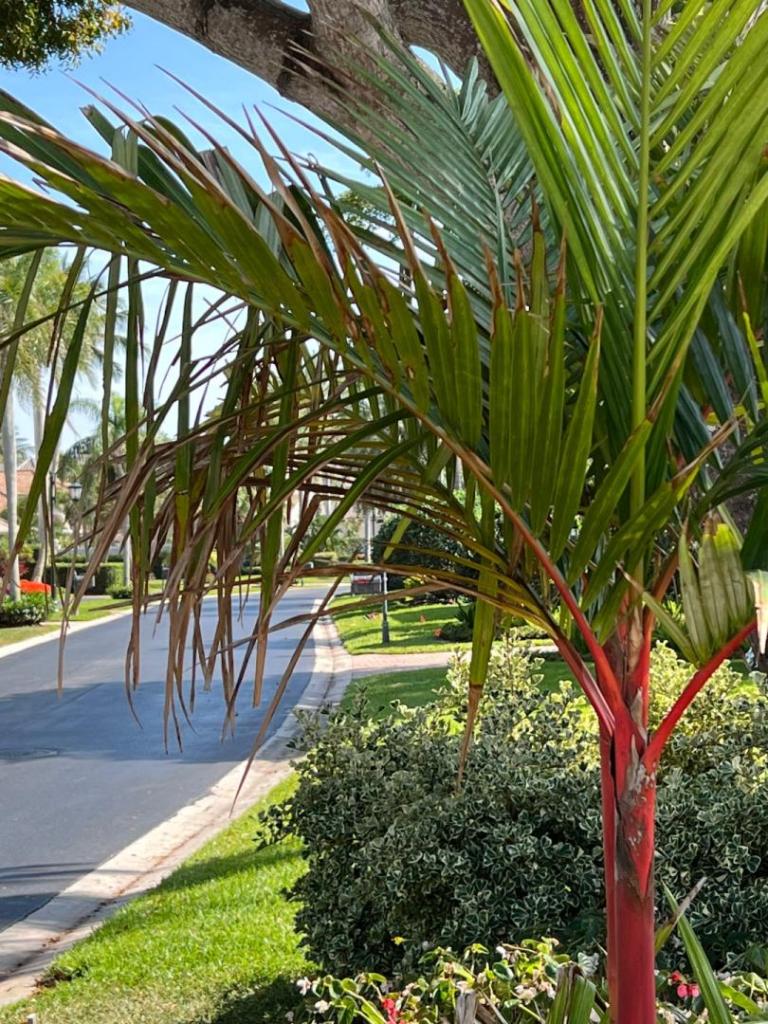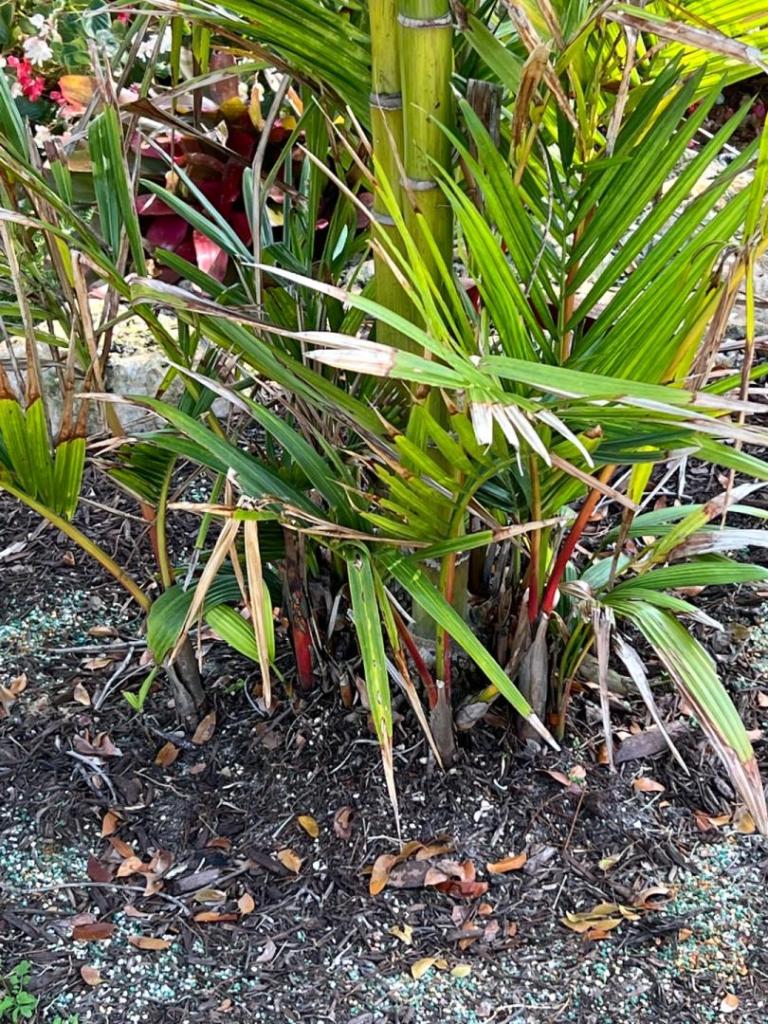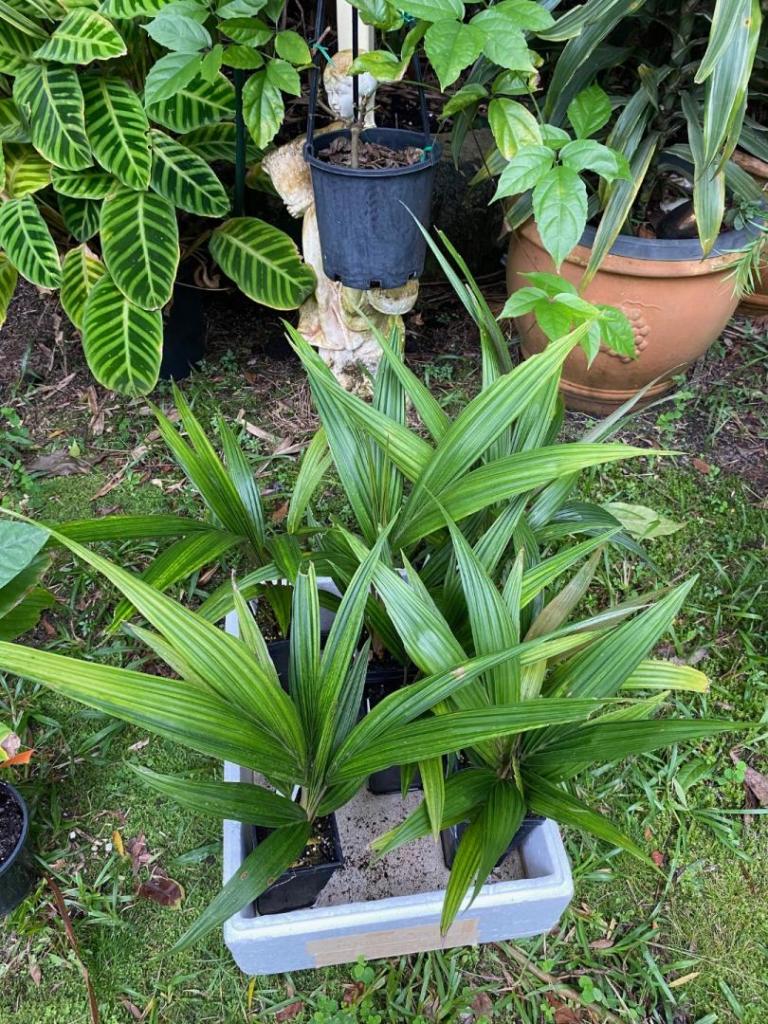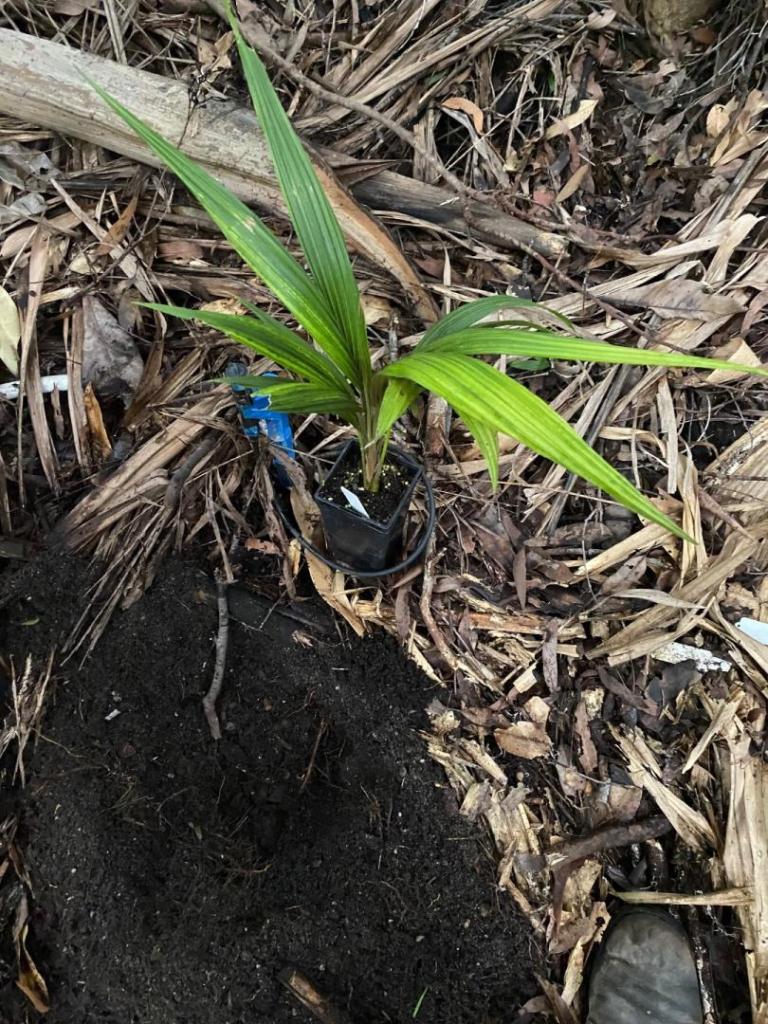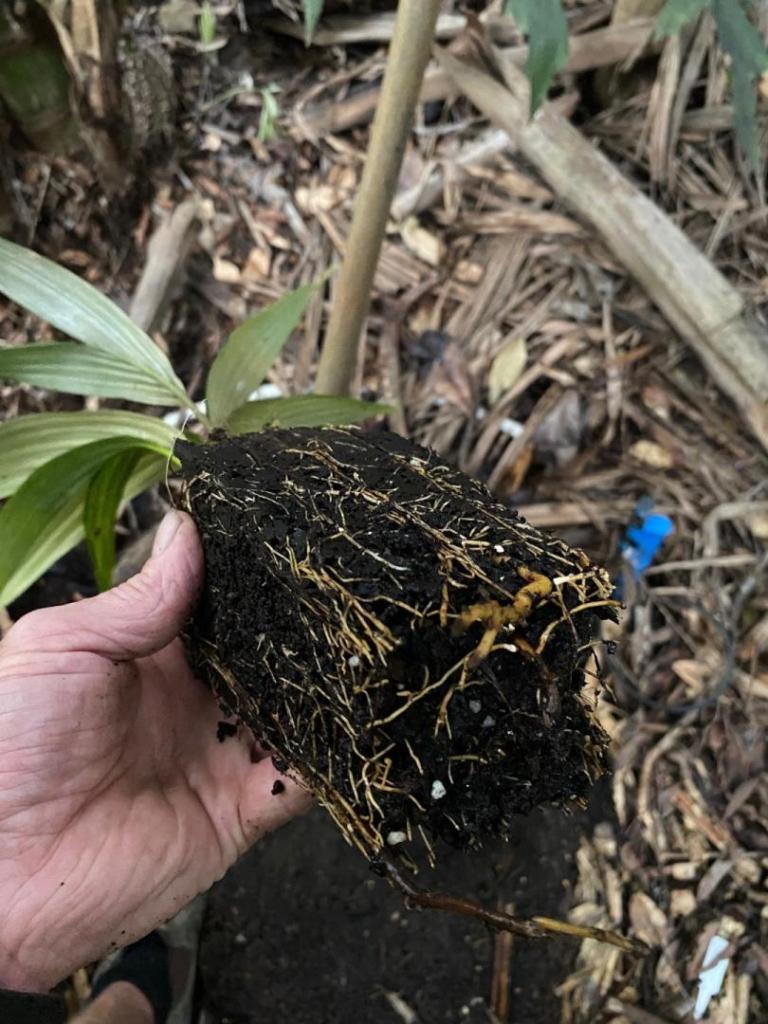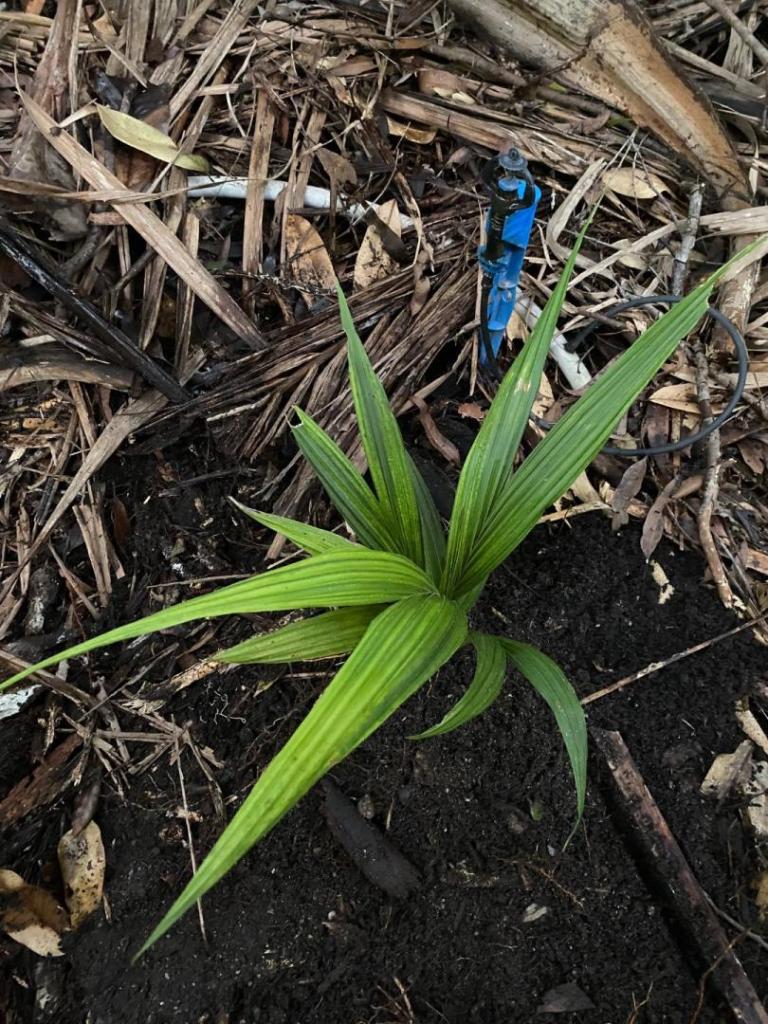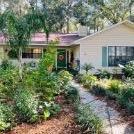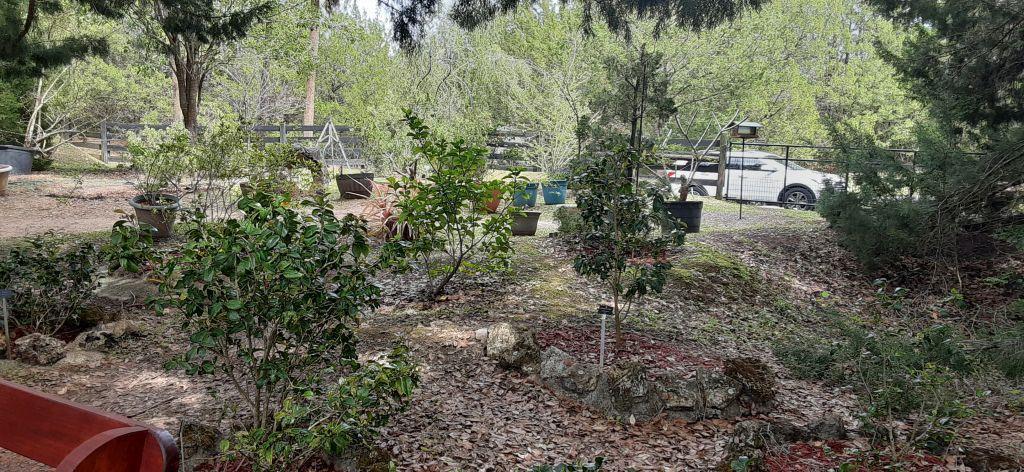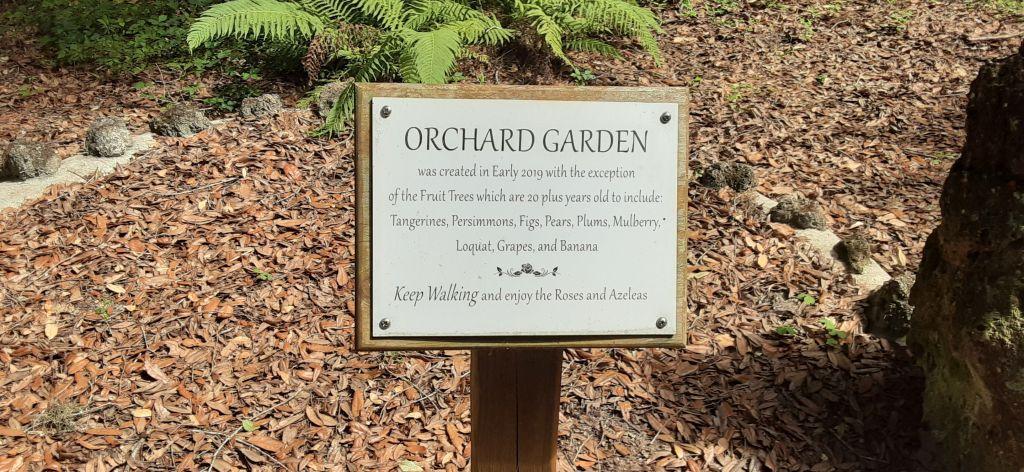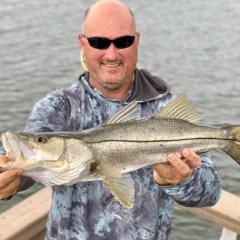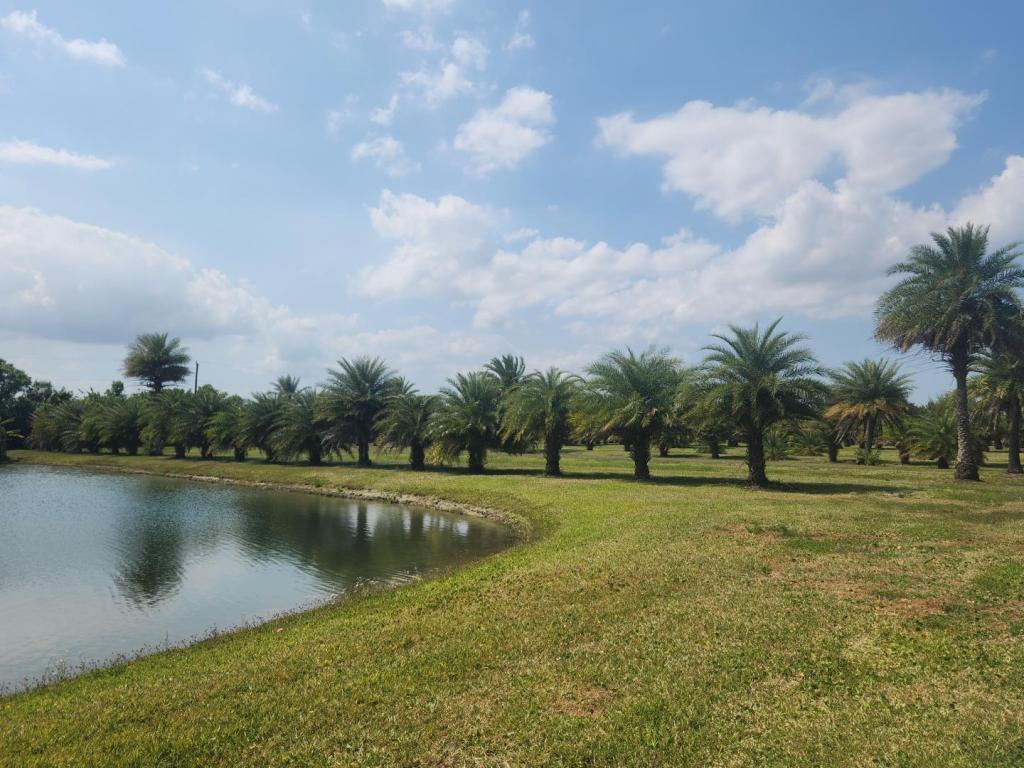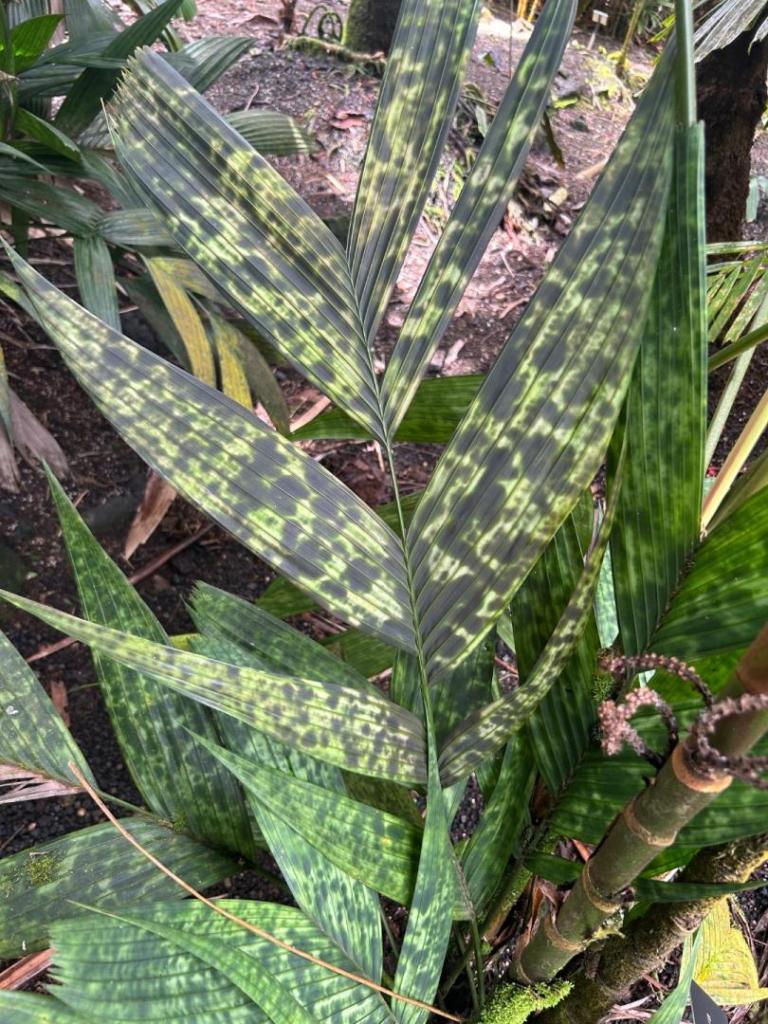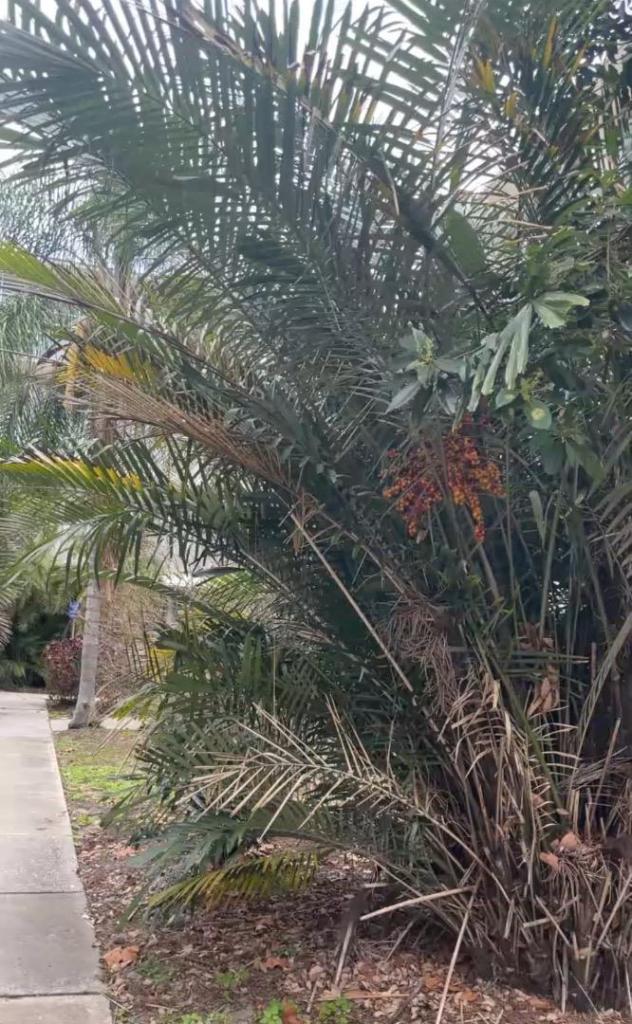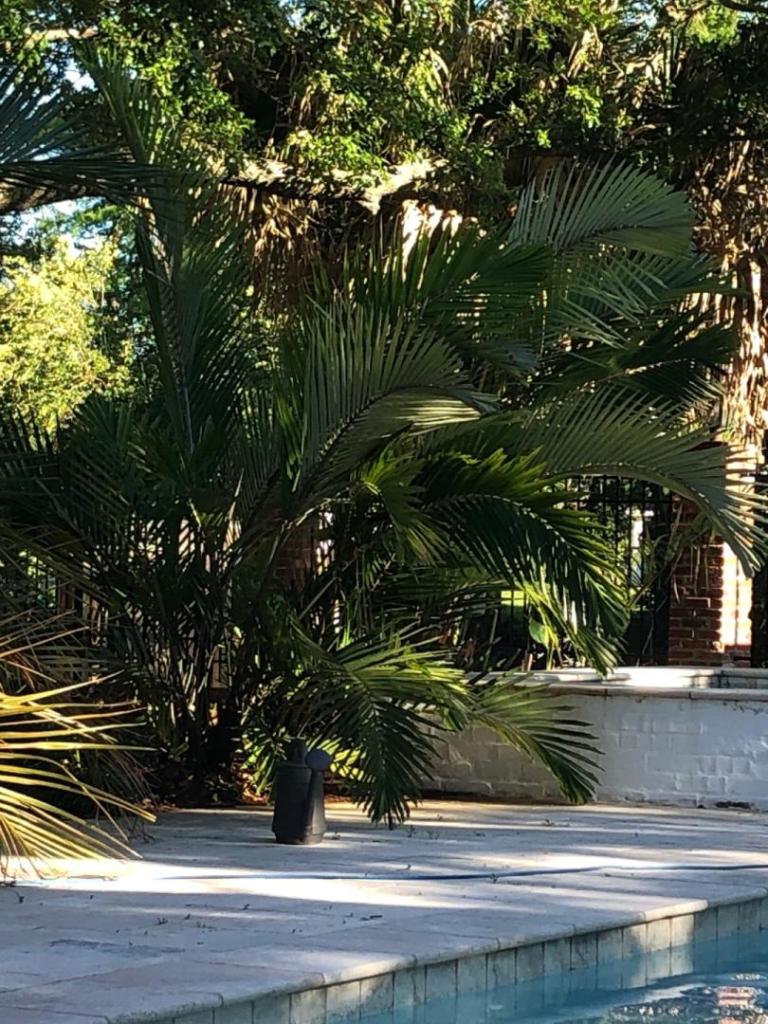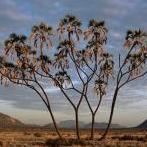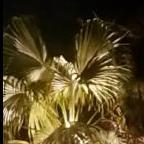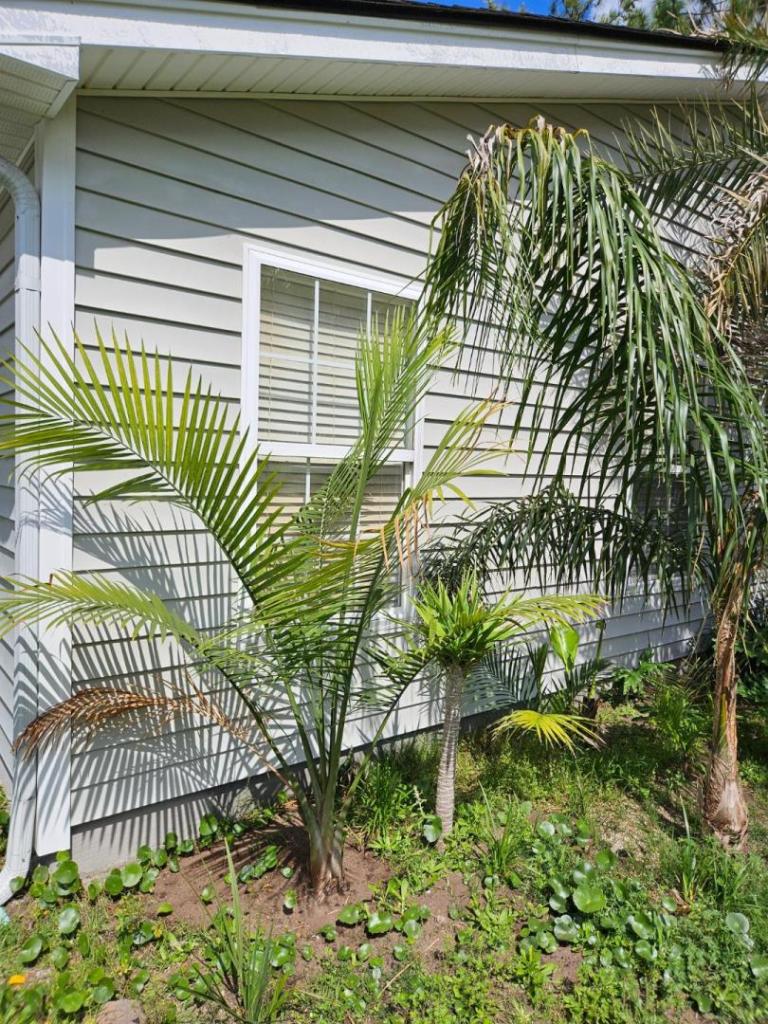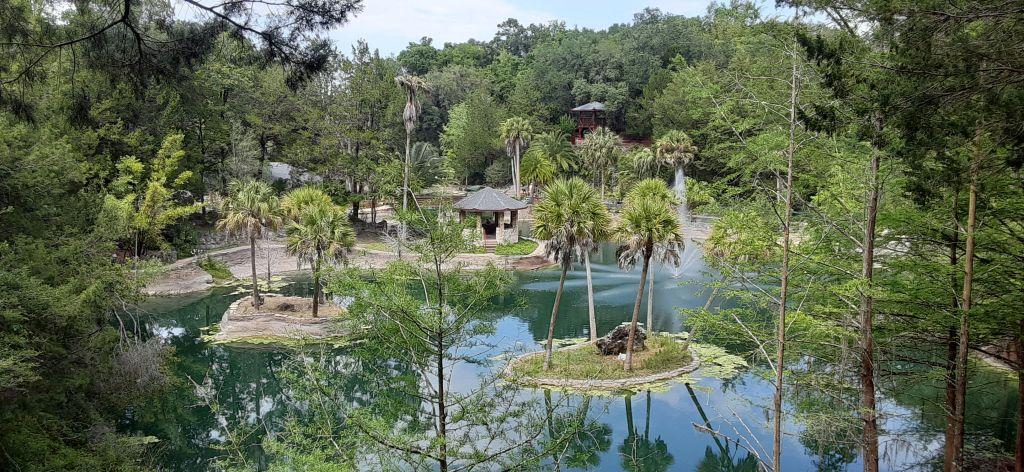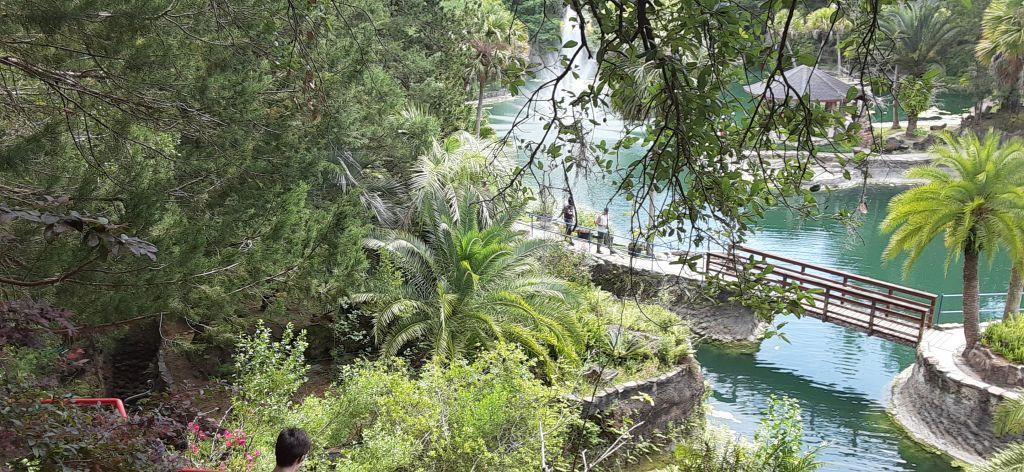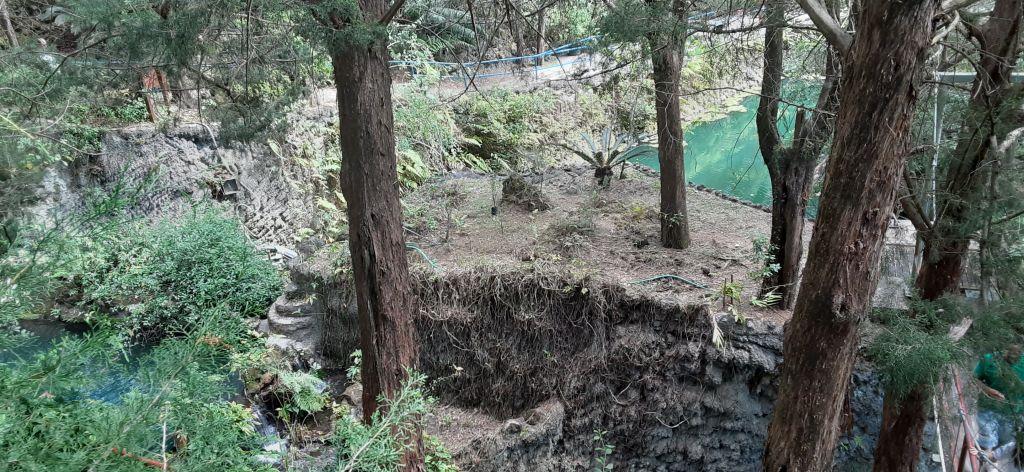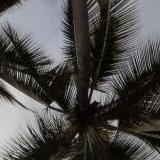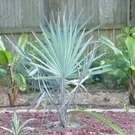Leaderboard
Popular Content
Showing content with the highest reputation since 04/19/2024 in all areas
-
I planted the first palm at my new house today. It was a 45 gallon monster with about 3 foot of trunk that had wayyy outgrown its container. Phoenix sylvestris is the species. probably weighed 500lbs. That pygmy palm was there from the builder and is getting ripped out to install a patio, so I don't count it. Edit: Photo working now!21 points
-
Here are photos I took from SFBG! This is a unique climate and one of the few public gardens where you can see Plectocomia himalayana, Lepidorrhachis, and Juania! Full album here Plectocomia himalayana Ceroxylon quindiuense and Jubaea chilensis Rhopalostylis sapida Juania australis Lepidorrhachis mooreana13 points
-
I was passing through El Cajon, CA and stumbled across this beautiful palm garden. They are probably the healthiest Parajubaea I have seen in California! Photos of palm garden here12 points
-
I now have 6 Jubaea chilensis seedlings and one Jubutia. I will likely keep these potted to at least 5 gallons before planting them in the ground along the forests edge. I am located just north of San Antonio, but at over 1,000 feet above sea level, my nights are cooler and my daytime humidity is much lower. I am hoping that these can survive my zone 8A or colder winters, and the Dallas area survivors have brought me some solace. The Jubutia is the 1 gallon pot on the left.11 points
-
10 points
-
10 points
-
9 points
-
@Mr. Clark Welcome to PalmTalk! Because of where you are located, you can grow practically anything. That said, if you want to get the nursery "into the black" as quickly as possible, you'll want to get yourself a guaranteed revenue stream with stuff that can grow fast and wholesale just as fast to commercial and government customers. Residents also buy most of the palms below and many of them are outside of the typical "Phoenix/Syagrus/Washingtonia/Sabal/Butia" that wholesalers have relied on in the past. Roystonea regia (Royal Palm) and Cocos nucifera (Coconut Palm) are an easy sell to consumers. Down your way they are common, but Royals are increasingly being used here to replace the more disease-prone Syagrus romanzoffiana (Queen Palm) and Phoenix species. The aforementioned Beccariophoenix alfredii is increasing in popularity rapidly from Jacksonville down along I-95 and the entire I-4 corridor. Mules are the even-hardier pinnate palm for cooler areas. Our municipality plants both everywhere. A good family of palms to sell includes Veitchia arecina (Montgomery Palm), Adonidia merrillii (Christmas Palm), Wodyetia bifurcata (Foxtail Palm), and Carpentaria acuminata. Where you are located and in most of South Florida, any of these can grow anywhere. In Central Florida, Christmas Palms and Foxtails sell quickly for residential landscaping and hotels. Veitchia are more of a novelty here, whereas down your way, they line streets and are planted near buildings. Carpentaria is more of a dark horse of the family, but is a good palm for areas that require a Veitchia look with a smaller crown. If you hybridize Veitchia and Wodyetia, you'll get the highly-coveted "Foxy Lady" palm. Another good family of palms to include is Bismarckia nobilis (especially the silver variety) and at least Latania loddigesii (the Blue Latan Palm). Bismarckia is popular throughout almost the whole state and grows pretty fast once the root system is in place, and I've increasingly seen Blue Latans used in milder areas near me, like Winter Haven and Palmetto. Another easy seller is the Archontophoenix genus, especially Archontophoenix cunninghamiana and Archontophoenix alexandrae. Collectively, King Palms are very desirable and the supply is way lower than the demand. Archontophoenix cunninghamiana becomes viable somewhere around coastal JAX or St. Augustine. Archontophoenix alexandrae tends to do better a bit further south, but you'll still have a market for them in roughly 2/3 of the state. The Chambeyronia genus, which has now swallowed the Kentiopsis genus, has a lot of popular, chill-tolerant crownshaft palms you can sell to 2/3 of the state. The big sellers would be Chambeyronia macrocarpa (all varieties), Chambeyronia oliviformis, and Chambeyronia pyriformis. The Chrysalidocarpus (a.k.a. Dypsis that grow in Florida) genus tends to sell decent. Probably the most sold is Chrysalidocarpus lutescens, but Chrysalidocarpus decaryi probably isn't too far behind. Chrysalidocarpus leptocheilos, Chrysalidocarpus pembana, and Chrysalidocarpus lanceolata would sell better if they were more commonly available. These grow a bit more slowly than most of the other palms above. With the arrival of Lethal Bronzing in Florida, I'd be remiss if I didn't mention the Livistona genus. In particular, Livistona decora is a prize for municipal planting here. Livistona nitida, Livistona mariae, Livistona australis, and Livistona chinensis are also planted frequently. These also tend to reach mature size at a later time than some of the tropical and subtropical options above. This list is a bit myopic since these are primarily what is bought along the I-4 corridor and areas either further south or with similar microclimates along I-95, but it gives you a way to operate at a profit in a shorter amount of time and still provide a unique inventory to most of the peninsula.9 points
-
I purchased this Dicksonia around 8 months ago it has tucked itself in nicely into the garden purchased from a chain store occasionally you do get some good plants from chain stores and this was one of them it was just a bare stump with no leaves just cut of at ground level and sold by a commercial harvesting contractor8 points
-
One lone genoformis tucked away in the garden it has set seed I had some pollen of another one in a container which I just left next to female while she was flowering and had some success they take a long time to maturity 18 months so far they have been ripening for they have set some seeds I will just wait and see how long they ripen for observing them weekly8 points
-
8 points
-
8 points
-
8 points
-
7 points
-
Yes. This is my office. It's where I put palms that need more sun than I can provide at my house ten minutes to the south. Good on you for identifying the Parajubaea. I have had professional nurserymen accuse them of being 'Mules' (a cross between Syagrus romanzoffianum and Syagrus schizophylla. There are more interesting things as well - they just aren't as big.7 points
-
7 points
-
If you are growing for profit, the common, easy care, fast growing stuff sells by volume. Most people just want the same easy stuff that grows with little effort. But if you are doing it as a fun hobby, the sky’s the limit. If I had a “for fun”, in zone 11 Florida, small nursery….. I’d grow stuff that I was interested in, was less common, and that I think would be good to see more of in my area. For me that would be Copernicia, Coccothrinax, Pseudophoenix, Serenoa, Thrinax, Leucothrinax, Lantania, Chambeyronia, Satakentia, Dictyosperma, Beccariophoenix, Allagopterra, a few Dypsis/Chrysadidocarpus, Coonties and a couple other Cycads, and my favorite less common crotons and bromeliads. These would be things that grow well in the area without ICU-level care, but are still interesting enough and eye catching.7 points
-
6 points
-
I've tried a couple to no success, but I probably planted them in the wrong areas. The winters always got them, though, and they would spear pull in the spring. Of course, this is wet winter bay area weather. Florida is like this whole 'nother world That being said, I have a perfectly healthy Jubaeopsis in my front yard that is starting to get some real size on it. Perhaps I should revisit the Ravenea, focusing on this area; but honestly, the space is already spoken for with the current plantings.6 points
-
6 points
-
6 points
-
After a relatively mild winter but night temperatures consistently below freezing, the palms did well. We only had a couple nights in the teens with next days below freezing but otherwise, very stable temps. The Trachy, Brazoria and Needle, unprotected except for some lights barely used, are pushing a lot of new growth. I fed all with PalmGain about a month ago. The Trachy is still recovering from that winter hit a year ago…a lot of frond damage but with this milder winter, I think it’s almost recovered all the fronds it lost. It has more flower spathes than ever…maybe 12 or so…the Brazoria is a little on the yellow side but it’s a much lighter blue green than the Trachy and Needle so maybe the comparisons make it look a bit off. The protected Medi completely recovered from the winter a year ago but even with lights and complete cover a few segments did suffer but no whole fronds and really not even worth mentioning… The smaller trunks are the most aggressive right now but the big trunk is almost back to normal though fronds seem smaller than the lesser trunks. Another view with the never protection McCurtain… And finally the other Needle in the shade. The sunny Needle needs some cleanup but this one is so naturally protected with its Holly tree canopy and its backup embankment…only needs some low hanging fronds removed… So that’s it…will feed all again in late May and watch them grow. This more normal winter without so many temperature rollercoaster seems to have really given the palms a break.6 points
-
I disagree. Mine were defoliated in the 2022 Christmas Freeze (min 19F, trunk protected), by December 2023 they were both back to looking fantastic again. (Granted, they have both been defoliated again but are putting on good growth now. Low was 18F with trunk protection again). Starting with the front yard Queen. First pic was when it was cleaned up on February 18 2023. Next pic is on Jan 2 2024. I had not gotten a pic of it in December, but it still looked pretty good. Pic 1: Pic 2: Next is the back yard Queen. First pic was taken February 18 2023, the day it was cleaned up. It had NOTHING, much less to start with than the front yard Queen. Second pic is December 3 2023, with a crown that looks pretty good. Pic 1: Pic 2: So basically, Queens can recover much faster than you think. A Queen that receives no help in its recovery process will obviously take much longer than Queens like mine, which were helped thru the process and were back to looking pretty good again by the end of the growing season.6 points
-
6 points
-
My daughter and her husband have been doing landscape design and installation for a long time. She knows a lot about palms, she's my daughter lol. Most of her clients in very expensive areas are new here from up north. They know nothing about palms and generally go for the cheap common stuff. The rare exotic stuff just is a small market for palm nuts in general. I had talked Jeff S (forgot the last name) had his rain forest collection said he had to do other stuff like hedging and broms to turn a profit, exotic palms take to long and to few buyers, I had sold stuff online, rare stuff and people don't want to pay up for a slow growing palm that u put 5 years into,6 points
-
I got more information from the nursery man, who planted this palm in November 2019. I inquired about the use of various fungicide's recommended by connoisseur, Steve Stern. None of these has been used on this specimen. That stated, it would probably help substantially if they were used. During this time frame, the minimum temperature recorded at PBIA was 37°F. Low 40°F (43F) temperatures nearly every year at the airport during this time frame. At all times, the median temperature well exceeded the necessary Koeppen temperature required for tropical rendering. In fact, most months median temperatures were closer to 70°F than the required 64.8°F. This palm is located at latitude, 26.93° north. It is in an area surrounded by water not far from the ocean. However, I would not describe it as "flourishing". It reminds me of the Newport Beach Coconut. The browning tips of the Palm are evident. This is definitely a very ticklish palm that requires close attention for success in southeast Florida.6 points
-
I have one C. lastelliana and one C. leptocheilos and the differences are fairly noticeable at this stage. The leptochelios is ID’d from comparing it to other palms labeled as such and the lastelliana was bought from Floribunda as a seedling. I guess some of the differences could be variation but I just dont have the experience to know for sure. I’ve never been able to tell the mature ones apart for certain. I’ve heard lepto is not as robust or that their fronds dip below 90 deg or they are less erect etc. Anyway, I thought it might be interesting to put these young palms side by side. Does anyone agree or disagree that these two are regular examples of their species? lastelliana on the left. Its leaflets seem more blunt and wider than leptocheilos. The petioles are also longer. The stem of leptocheilos has more tomentum and It showed up much earlier. This lastelliana also has light mealy bug markings.5 points
-
5 points
-
5 points
-
I got these oraniopsis from plumtree pocket nursery a few weeks ago they have quality rare palm and trees with some very unique stock all in quality condition so I thought why not plant one of the oraniopsis in the ground a slow growing palm this one will definitely be getting some water attention under irrigation and some loving care5 points
-
Put a decent sized mule in the ground today. Right in front of my queen as a replacement for the day that the cold inevitably kills it, be it next year or a decade from now. And I did plant this W Robusta I got off the clearance rack a month or two ago so I’ll add that as well. Looks much better now than it did.5 points
-
5 points
-
All this Metallica talk lately so I thought I’d share a pic of mine. There were 3 pots of these at a nursery I visited about 20 years ago , maybe longer. They looked burnt and very unhappy . I paid about $30 for all 3 pots with 4 plants in each pot . I gave one to my sister in law who has since passed on . I have no idea what happened to that one . These two pots of plants are very healthy and a little one popped up a couple of years ago. It is the pot on the left and I just restored the soil in that one. The one on the right needs to be done as it’s been a while. Harry5 points
-
5 points
-
5 points
-
5 points
-
5 points
-
These can definitely take some cold. I have one in the ground in zone 9a and it has seen its fair share of low 20s/high teens without issue. Here is one that is fruiting where I work. Whatever you do, don't touch the pulp of the fruit with your bare hands. It gave me one of the worst skin reactions I have ever had in my life, and I have had some pretty bad ones due to different plants.5 points
-
4 points
-
4 points
-
Since it’s on the way out anyways…. I’d make sure the pot has decent holes and freely drains. Then I’d get a couple-inch deep saucer and put it underneath. Flood the pot til it flushes through well and stick it in a spot that gets 1/2 day direct sun in a warm spot. Keep watering it from the top every time the saucer is empty til it fills back up. Get some ferrous sulfate and do a topical leaf drench, and give it a shot of EDDHA iron once in the soil. This will either quickly kill it, if there is root rot, or it will burn a little in the sun, then start putting out nice green fronds through summer. …Or, just grab another and start over. These always did well for me outside sitting constantly in standing water in the saucers, as long as they have some sun and heat…..4 points
-
4 points
-
With a few more magnifica germinating I pot them up as they appear I gently tease them out with a bbq fork it seems to work for me once dug out it’s of the potting bench where the empty tubes fell on top off them breaking one root completely off iam pretty sure it will die and go the great garden in the Hawaiin sky to its forever home a easy palm to germinate and grow bottom heating 30 degrees Celsius coco coir perlite mix potting up is fairly straightforward a free draining mix and half a teaspoon of Australian native plant Nutricote on top of the soil then covered so I don’t wash it out when I water then off to the hothouse to rest up all I have to do is monitor the moisture level or as with Joey palm growing just simply add water and repot when necessary there that easy to grow as simple as it gets don’t fuss over them IMG_3933.mov4 points
-
I put mine in as a 3g 3 years ago, and it was sending up little sprouts shortly after that. It pops a new member about every year, but they usually die off after about a year, probably from rotting flowers in the crown from the neighbors tree, or perhaps being planted too deep. One doinker on the trunk persists though.4 points
-
4 points
-
4 points
-
4 points
-
I'd agree with the other comments on Sylvesters. They are getting wiped out here in Orlando now, and I'm about to remove an infected one in my front yard. Personally I'd avoid anything Phoenix, as it's not clear what other species are at severe risk. As far as other palms go, you could look at it as two categories: Easy sale "common" palms like Queens, Livistona Chinensis / Nitida / Decipiens / Saribus, Mules, Rhapis Excelsa "Lady Palms," Foxtails, some Dypsis/Chrysalidocarpus Lutescens, Bismarck, Fishtails, Pindos, Kings, Ptychosperma Elegans, etc. Those could be easily sold any time, but you wouldn't make much on them...they are more "commodity" palms that are grown by a LOT of nurseries. But it could make sense if you need a minimum acreage or sales volume to qualify for tax breaks. "Unusual" palms that may command higher individual prices, but are either slower growing or less in demand. Those are the sort of "collector" palms that we like here. In Zone 11 you could grow almost anything, and much faster than in zone 9 or 8. So you could grow Arenga Engleri, which commands biiig prices in Jacksonville. Or unusual tall palms like Arenga Pinnata or Attalea Cohune. Beccariophoenix Alfredii is another good one that should grow pretty quick in SFL. Any of the Copernicia would be good, as well as other interesting palms like Kerriodoxa Elegans, lots of options in the Licuala group, some of the "other" Syagrus like Schizophylla and "Coco Queen" Schizophylla x Romanzoffiana, etc. Many of these are "easy grows" if they don't see freezing temps, and could be shipped to Zone 10-9b areas easily. Overall maybe a mix of common and unusual is a good choice. But avoid Sylvestris.4 points
-
4 points

